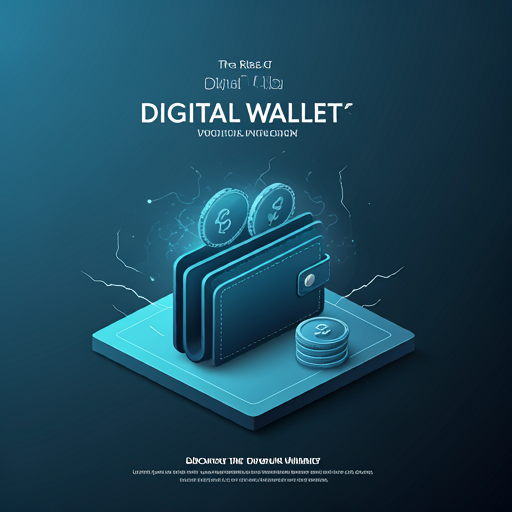The Rise of Digital Wallets: Revolutionizing Payments
Definition and Functionality
Digital wallets are electronic applications that store payment information securely. They enable users to make transactions without physical cards. This technology enhances convenience and speeds up the payment process. Many people appreciate quick transactions. Digital wallets often incorporate advanced security features, such as encryption and biometric authentication. Security is crucial in today’s digital age. Users can link their bank accounts or credit cards to these wallets. This integration simplifies managing finances. It’s a practical solution for everyday purchases.
Historical Context and Evolution
Digital wallets have evolved significantly since their inception. Initially, they were simple online payment systems. Over time, they integrated with mobile technology. This shift allowed users to make payments on the go. Many people find this very convenient. The introduction of contactless payments further accelerated adoption. Users can now pay with a tap. Key milestones in this evolution include:
These advancements have transformed how transactions occur. Change is often necessary for progress.
Types of Digital Wallets
Hot Wallets vs. Cold Wallets
Hot wallets are connected to the internet, allowing for quick access to funds. This connectivity facilitates immediate transactions, which is beneficial for active traders. However, the constant online presence increases vulnerability to cyber threats. Security is a major concern. In contrast, cold wallets store assets offline,
Mobile Wallets and Desktop Wallets
Mobile wallets are applications designed for smartphones, enabling users to make payments on the go. This convenience appeals to many individuals. They often support various payment methods, including credit cards and cryptocurrencies. Users appreciate flexibility in transactions. Desktop wallets, on the other hand, are software installed on personal computers. They provide a more secure environment for managing larger amounts of digital assets. Security is paramount for serious investors. Both types serve distinct purposes, catering to different user needs. Each has its advantages.
Benefits of Using Digital Wallets
Enhanced Security Features
Digital wallets incorporate several enhanced security features to protect user information. These include encryption, two-factor authentication, and biometric verification. Such measures significantly reduce the risk of unauthorized access. Security is essential in financial transactions. Additionally, many wallets offer transaction alerts for real-time monitoring. Users can stay informed about their activities. Overall, these features contribute to a safer payment experience. Safety is a top priority.
Convenience and Accessibility
Digital wallets offer significant convenience and accessibility for users. They allow for seamless transactions across various platforms. This integration simplifies the payment process. Users can make purchases with just a few taps. Additionally, digital wallets often support multiple currencies and payment methods. This flexibility enhances user experience. Furthermore, they enable quick access to transaction history. Users can track their spending easily. Overall, these features streamline financial management. Efficiency is key in today’s fast-paced world.
Challenges and Risks
Security Vulnerabilities
Digital wallets face several security vulnerabilities that can expose users to risks. Cyberattacks, such as phishing and malware, can compromise sensitive information. These threats are increasingly sophisticated. Additionally, inadequate security measures can lead to unauthorized access. Users must remain vigilant. Furthermore, reliance on internet connectivity increases exposure to potential breaches. This dependency can be problematic. Regular updates and strong passwords are essential for protection. Security is a continuous process.
Regulatory and Compliance Issues
Digital wallets encounter various regulatory and compliance issues that can impact their operation. Governments impose strict guidelines to protect consumers and ensure financial stability. Compliance can be complex and costly. Additionally, varying regulations across jurisdictions create challenges for providers. This inconsistency complicates global operations. Companies must invest in legal expertise to navigate these requirements. Understanding regulations is crucial for success.
Impact on Traditional Banking Systems
Disruption of Conventional Payment Methods
The rise of digital wallets has significantly disrupted conventional payment methods. Traditional banking systems face increased competition from these innovative solutions. This shift challenges established financial institutions to adapt quickly. Many banks are investing in technology to remain relevant. Additionally, consumer preferences are changing rapidly. Users now demand faster and more convenient payment options. This evolution is reshaping the financial landscape. Change is inevitable in this industry.
Collaboration Between Banks and Digital Wallet Providers
Collaboration between banks and digital wallet providers is becoming increasingly common. This partnership allows banks to enhance their service offerings. By integrating digital wallets, they can attract tech-savvy customers. Many users prefer seamless payment solutions. Additionally, banks can leverage the innovative technology of wallet providers. This synergy can improve operational efficiency. Adapting to change is essential for survival.
The Future of Digital Wallets
Technological Innovations on the Horizon
Technological innovations are set to transform digital wallets significantly. Emerging technologies like blockchain and artificial intelligence will enhance security and efficiency. These advancements can streamline transaction processes. Many users will benefit from faster payments. Additionally, integration with Internet of Things devices is expected. This connectivity will create new payment opportunities. Adapting to these changes is crucial for success. Progress is essential in this field.
Predictions for Market Growth
Market growth for digital wallets is expected to accelerate significantly. Analysts predict a compound annual growth rank of over 20%. This expansion will be driven by increasing consumer adoption. Many users prefer digital solutions for convenience. Additionally, businesses are integrating these wallets into their payment systems. This trend enhances customer experience. The future looks promising for digital finance. Change is on the horizon.
Conclusion
Summary of Key Points
Digital wallets are transforming the financial landscape significantly. They offer enhanced security, convenience, and accessibility. Many users appreciate the speed of transactions. Additionally, collaboration between banks and wallet providers is increasing. This partnership fosters innovation and improves services. Market growth predictions indicate a robust future. Adapting to these changes is essential for success. Progress is inevitable in this sector.
Final Thoughts on the Digital Wallet Revolution
The digital wallet revolution is reshaping financial transactions. Users benefit from increased security and convenience. This shift encourages faster payment methods. Additionally, the collaboration between financial institutions and technology providers enhances service offerings. Many consumers now prefer digital solutions. As technology evolves, so will user expectations. Innovation drives the future of finance.
